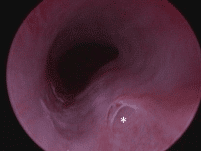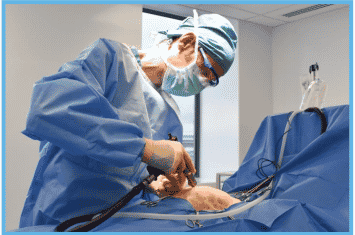Cystoscopy & Laser Ablation of Ectopic Ureters for Pet Owners
What is cystoscopy?
Cystoscopy is a form of endoscopy which essentially uses a camera to look inside the body. We perform cystoscopy in female dogs by passing a ‘rigid’ camera into the urethra through the vulva.
Cystoscopy allows us to see inside the urethra and bladder and identify any problems. This can be useful for diagnosing a variety of issues, including tumours and stones. We use cystoscopy in the diagnosis and treatment of ectopic ureters.
What is the ureter?
The ureter connects the kidney to the bladder, allowing urine to flow and the bladder to fill. Dogs with an ectopic ureter are born with their ureter in the wrong position. Instead of joining and opening into the bladder, the ureter runs through the wall of the bladder and opens into the urethra. This means that the urine ‘bypasses’ the bladder and this results in it dribbling out (incontinence).
What is the treatment?
Traditional treatment involves surgery to open the abdomen, open the bladder and create a new hole for the urethra in a more normal place. Laser ablation is a minimally invasive technique that can be used as an alternative to surgery. This involves removing of the wall of the ectopic ureter under cystoscopy using a special laser. This technique works very well and the recovery period is significantly shorter (dogs will often go home the next day).

Image of the urethra of female dog with an ectopic ureter using the cystoscope. The ectopic ureter can be seen opening into the urethra (*).
Although most dogs are cured or significantly improved by the procedure, some do have ongoing incontinence. This is probably due to other issues with the urinary tract, rather than a failure of the procedure.
As far as we are aware, we are the only practice in the North East that have experience with this technique.

